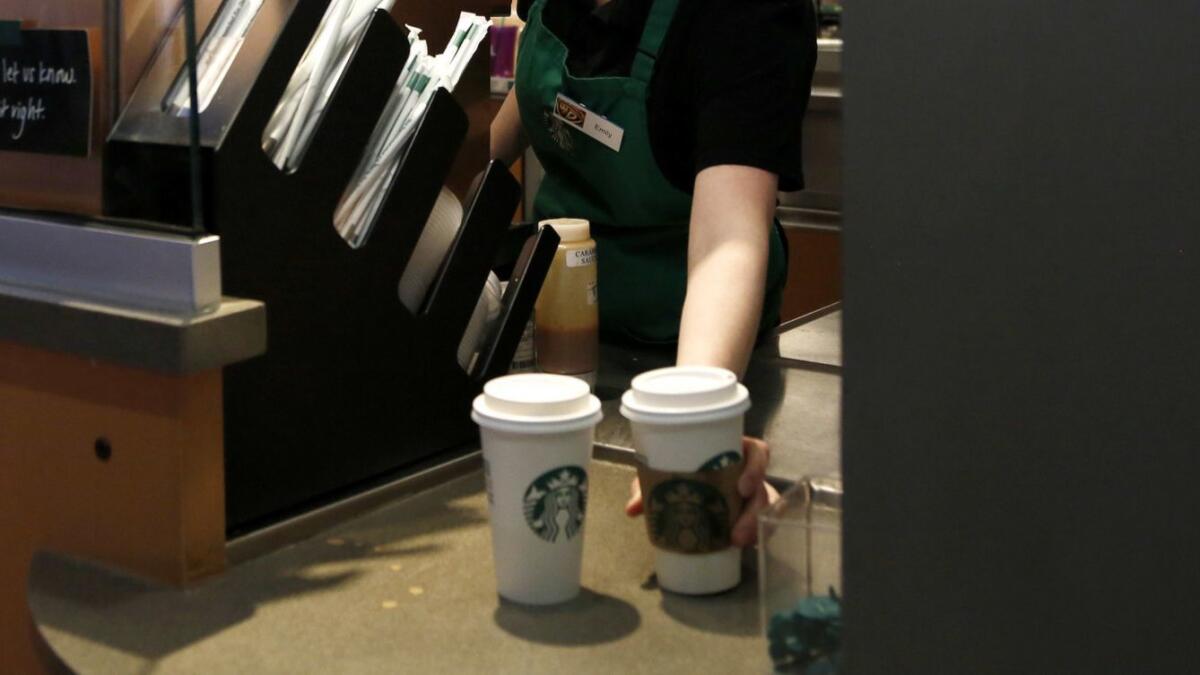Why so many Americans still work multiple jobs in a strong market

- Share via
The U.S. labor market has come a long way in recent years, but one key measure has barely budged — a reflection of lukewarm wage gains as well as broader shifts in the economy.
Multiple-job holders made up 5.1% of the total employed in August, and the share has been hovering around 5% since the expansion began in mid-2009.
That’s despite unemployment having plunged to 3.9%, an almost five-decade low and less than half the level seen in the immediate aftermath of the recession. Monthly hiring gains averaging 207,000 this year are well ahead of the 2017 pace, and the September payrolls report due Friday is projected to reinforce the strong demand for labor amid a shortage of qualified people.
Yet pay gains have been disappointingly moderate and employers have been slow to increase hours and benefits — the primary reason that workers continue to rely on a patchwork of jobs. Economists point out that the data also reflect crosscurrents including the gig economy, educated people opting for the challenge of doing more, or younger workers seeking variety and a work-life balance.
“The labor market is not as equally tight across the country,” and the pickup in worker pay “hasn’t been strong enough,” said Ryan Sweet, head of monetary policy research at Moody’s Analytics Inc. At the same time, Sweet said, “by almost every metric the labor market is really strong,” which means “there’s a lot more opportunity for people.”
Typically, a declining share of multiple-job holders would be considered a good sign that more people are transitioning to regular positions with more benefits and better schedules. But the data are probably also capturing “something more structural” linked to the changing nature of the economy and demographics, said Sweet, who reckons this may help keep the trend fairly stable.
Besides, there are plenty of indications the labor market is tightening. Job openings exceeded the number of unemployed people by the most on record in July. More recently, the tally of part-timers who’d prefer a full-time position has fallen to a post-recession low of 4.4 million.
The number of multiple-job holders fell to 7.9 million people in August, following a spike the prior month to a decade-high 8.1 million. Economists point out that the series is typically volatile and hard to parse.
One of them is Komi Assogba, who has been working two jobs for nearly 10 years. He’s a bellhop at the Crowne Plaza hotel in Arlington, Va., and a barista at a Starbucks in Washington. The 58-year-old former chemistry teacher said he quickly needed a way to support his family after moving to the United States from France in 2009 but lacked U.S. certification for education.
“I was looking for an opportunity for my kids,” Assogba said. “They were growing so fast, and I said, why not make the sacrifice for them?”
Dylan Williams, 22, a full-time student pursuing a master’s degree in public health at George Washington University, earns about $475 a week before taxes from two minimum-wage jobs at a coffee shop and co-working space in the nation’s capital. That helps him cope with the “outrageous” cost of living in Washington and save toward his student loan payments, he said.
Sweet said that as labor-market slack dissipates and wages accelerate, there will be less incentive for people to work more than one job. On the other hand, demand for talent may encourage skilled people to take on additional work tailored to their interests and schedules.
The Moody’s analyst speaks from personal experience: Sweet, 37, has taught macroeconomics to undergraduates at nearby West Chester University in Pennsylvania one night a week for eight years.
Millennials, who typically prefer to have greater control over their time, may find multiple jobs “more appealing,” Sweet said. Also in the mix is the gig economy, with more options such as being a driver for a ride-hailing company along with a regular day job.
The picture remains complex, though in recent years there has been evidence that certain groups, such as women, are more likely to take on additional work in a tight labor market, according to Martha Gimbel, director of economic research at jobs-website Indeed’s Hiring Lab.
Also, the higher a person’s education level, the greater their likelihood of holding more than one job, including in professional and business services, finance, insurance or real estate, Gimbel said.
“That goes against stereotypes,” she said.
Indeed’s data on job searches in the past year still show “a desire for full-time, 9-to-5 jobs,” Gimbel said. And “in a tight labor market, workers are going to have more bargaining power.”
Assogba, the bellhop and Starbucks worker, said his children are now grown and pursuing graduate degrees, but he still isn’t sure whether he’d give up the jobs. He likes staying busy and, more important, the benefits. Starbucks helps pay for employees’ tuition, and he has submitted his applications for a master’s degree in education so he can teach again.
If it works out, he plans to attend classes on Saturdays — his one day off.
Chandra and Foster write for Bloomberg.
More to Read
Inside the business of entertainment
The Wide Shot brings you news, analysis and insights on everything from streaming wars to production — and what it all means for the future.
You may occasionally receive promotional content from the Los Angeles Times.










